
All categories
Featured selections
Trade Assurance
Buyer Central
Help Center
Get the app
Become a supplier

(14851 products available)














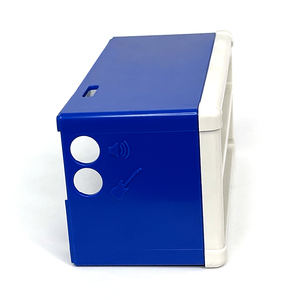


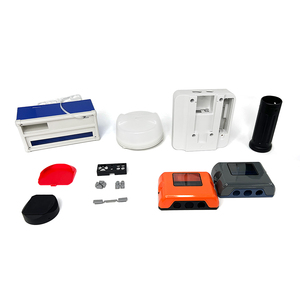

















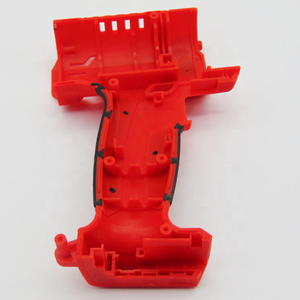
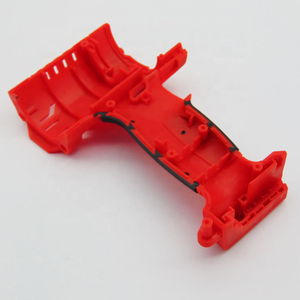
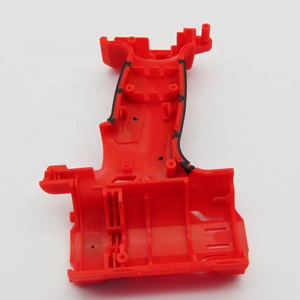

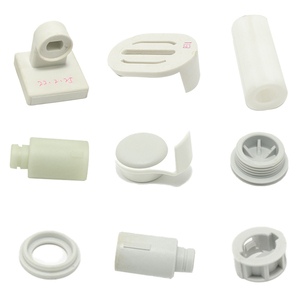
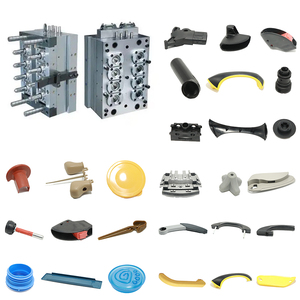

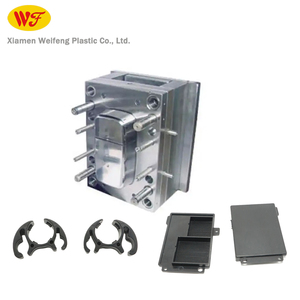

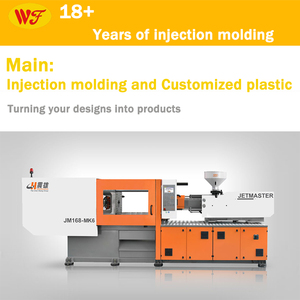






There are several types of ABS plastic costs based on their structural, chemical, and thermal properties. These variations help in choosing the right option depending on the application area.
Standard ABS
Standard ABS is renowned for its toughness, rigidity, and ease of processing. These properties make it a popular choice in various sectors. Such sectors include automotive, electronics, and consumer goods. These products include LEGO bricks, panels, and tools. ABS can be easily molded into complex shapes. This characteristic adds to its versatility. Moreover, its cost is relatively low compared to other engineering plastics. For instance, high-impact polystyrene (HIPS) is often directly substituted.
High-Impact ABS (H-ABS)
High-impact ABS is primarily developed for applications which require much greater resistance to impacts. These include protective equipment, automotive components, and tools. The material is more flexible and thus can withstand harsher treatment without cracking or breaking. These properties of flexibility and retardance to impacts make it ideal for manufacturing outer casings, bumper, or such things as toys.
Heat-Resistant ABS (HRABS)
Heat-resistant ABS is usually applied where exposure to higher temperatures or heat-generating components is unavoidable. These include electronic housings, automotive parts near engines. Also, such applications as appliances with heat elements. ABS has good thermal stability. Therefore, it does not de-form or lose mechanical properties when exposed to increased temperatures. This feature makes it useful for components that operate in such conditions.
Acrylonitrile Styrene
Acrylonitrile Styrene Butadiene is a modified version of standard ABS. It incorporates a synthetic rubber element through which they enhance the impact resistance. ABS-Acrylonitrile is extensively used in outdoor applications such as automotive exterior components and enclosures. The additions of butadiene mean better performance in lower temperatures hence retaining toughness. Also, it provides a softer feel. This property is essential for consumer products such as tools or grips.
ABS-Like Styrene
ABS-Like Styrene is usually employed in applications where there is a need to have the aesthetic and functional properties of ABS without the actual chemical composition. This plastic is commonly used in 3D printing and mock-up production. These are areas where cost and weight are more critical as opposed to durability. It can easily be processed and finished. Therefore, it makes it an excellent choice for visual prototypes or low-stress components.
Bio-ABS
Bio-ABS is developed from renewable resources. These make it a more environmentally responsible version of traditional ABS. While not as widely used, it is gaining recognition in such fields as consumer electronics and automotive where sustainability factors are essential. Bio-ABS retains most of ABS' mechanical properties. Therefore, it is a potential alternative in many applications to reduce carbon footprint.
Toughness
ABS' toughness allows it to withstand impacts and shocks. This property makes it commonly applied in such areas as automotive parts, protective housings, and consumer products. As mentioned earlier, high-impact ABS enhances this feature. Therefore, it is suitable for products requiring retardance to physical stress and extreme effects and conditions.
Durability
ABS is usually very strong and rigid. Sometimes, it is even compared to high-density polyethylene (HDPE). It is particularly resistant to chemical and environmental stress. Most importantly, it does not fade nor crack. This makes it suitable for outdoor use or products exposed to chemicals like cleaners.
Workability
ABS can easily be molded into complex shapes. Also, it can machined, glued, and painted seamlessly. These characteristics make it especially useful in manufacturing such products as household items, automotive interiors, and electronic casings. In addition, these properties uniquely position it for 3D printing applications where quicks generally are needed to achieving accurate prints.
Cost-Effectiveness
ABS is far cheaper than many other engineering plastics. These include polycarbonate (PC) or polypropylene (PP). Although its cost can be compared to that of high-impact, strong, and versatile HIPS, ABS is frequently selected for a broad spectrum of applications. This is primarily due to its availability and especially robust properties.
Weather Resistance
ABS is formulated to resist UV radiation and other weather elements. This property helps in retaining colors and mechanical properties over extended durations of outdoor exposure. It is therefore applicable in automotive parts, outdoor furniture, and construction materials.
Recyclability
ABS can also be recycled although not to the level of polyethylene terephthalate (PET). Nevertheless, it contributes to sustainability in a variety of industries. These include consumer electronics and automotive sectors where it is frequently reused in generation of new products.
There are a couple of important considerations wholesale buyers need to make when choosing cheap abs plastic. These are based on the needs of their customers. They also have to be guided by the product's intended application.
Required Type
ABS comes in numerous grades. Each grade has unique qualities that make it suitable for a specific application. For example, men are often advised to buy standard ABS for its ease of processing. It typically has a smooth finishing that can be glossy or matte. More importantly, it can be easily glued. The glue will hold even at high temperatures.
Those buying for the automotive and engineering industries should source high-impact ABS. This type is further enhanced for retardance to impacts. There is also heat-resistant ABS. It is ideal for customers who need plastic that can withstand excessive heat. They include customers whose businesses make electronic housings and automotive parts close to engines.
Customers with an eco-friendly preference will settle for Bio-ABS. This type is made from renewable resources. 3D printings often use ABS-like styrene. It has low density since it doesn't absorb much water.
Surface finishing
ABS can easily be painted, primed, or bonded. It comes with a variety of colors. It can also be sanded to get the desired surface finishing. For example, customers can achieve chemical resistance by smoothing the plastic surface. They just need to avail acetone or sandpaper to do the task effectively.
Mechanical properties
Bulk buyers should find out about their customers' required mechanical properties. ABS has a tensile strength of about 25.5 N/mm². Its elongation at yield is around 2%. More importantly, it stacks excellently. It also comes with impact resistance or the ability to withstand shock loading and sudden force applications.
Compatibility with other materials
Apart from being recycled, ABS is compatible with a variety of adhesives and coatings. They include acrylics, polycarbonate, and styrene. It bonds excellently with acetone.
Thermal properties
Wholesale buyers should get ABS with high fluidity and more thermal stability. They also test its glass transition temperature. Ideally, ABS should have a glass transition temperature of around 105 °C. This means it starts losing its mechanical properties after exposure to a temperature above this limit.
Colors and finishing
Customers also factor in aesthetic value when choosing ABS. It comes in various colors, including white, black, and blue. ABS intended for engineering applications often comes with a matte finishing. On the other hand, the one meant for household products has a glossy appearance.
Machining and processing
ABS supports various processing methods. These include injection molding, vacuum forming, and CNC machining. Buyers will, therefore, continue enjoying the plastic's versatility based on their customers' processing capabilities.
ABS comes with a variety of pros that make it a common choice among customers.
Impact resistance
Wholesale buyers who offset such costs as filling, shipping, and storage will enjoy impact resistance benefits. ABS is developed with styrene and butadiene rubber compounds. These gives it an ability to withstand considerable abuse ranging from bumps, drop, and even temperature swings.
Rough and tough
ABS doesn't easily dent or scratch. Some of its grades can even be chemically treated to enhance their toughness. This property ensures the final products have longer shelf lives. Buyers seeking products with high longevity and strength will find them in ABS plastic.
Easy to process
ABS is relatively easy to process. It supports a variety of methods, including machining, CNC, and injection molding. Buyers will enjoy its versatility based on customers' processing and fabrication capabilities. It also engineers' capabilities to modify the plastic without extensive specialized equipment or training.
Cost-efficient
Apart from easier processing, another factor that makes ABS preferred is its affordability. Although it comes with unparalleled strength and toughness, it's much cheaper than other plastics. These include high-density polyethylene (HDPE) and polycarbonate. It also has a relatively long life span. This makes it a go-to option to offset abating costs.
Availability
ABS is manufactured by polymerizing styrene with acrylonitrile rubber. The polymer was developed in the 1940s. Since then, it has been constantly improved to increase customer satisfaction. Therefore, it is readily available to buyers. They can take advantage of the timely supply when ordering it in bulk from credible suppliers online.
Versatile applications
ABS is commonly used in industrial applications. These include automotive interiors, instrument panels, and cases of electronic products. Additionally, it is used in household appliances such as vacuum cleaner housings and knife handles. The plastic is also a common choice in creating business machines, such as photocopier and fax machine housings. Moreover, it is popularly used in LEGO bricks, tools, and medical equipment.
ABS is recommended for food containers that are not meant for long-term food storage. Although the plastic has decent impact resistance, food-grade safety ABS is not FDA-approved. The food-grade plastic was manufactured using styrene-acrylonitrile copolymers. These additives give it higher strength and stiffness. More importantly, ABS plastic can be recycled multiple times.
There are several improvements wholesale buyers can make to abs plastic sheets to boost its benefits. For instance, adding rubber in the butadiene portion can improve impact resistance. This enhancement makes it a better option for outdoor applications. They also fortify the plastic with acrylic to improve UV resistance. Other modifications include using flame retardants to improve safety in several electronic applications. Tire treads are made from ABS copolymer of styrene and butadiene rubber to improve traction and longevity.
ABS can easily be blended with other plastics to create new materials that offset other plastics' disadvantages. For instance, when blended with polycarbonate, it produces a tougher plastic with more impact and chemical resistance. These enhanced properties make the plastic ideal for automotive parts and protective equipment. Manufacturers also blend nylon with ABS to improve abrasion and chemical resistance further. This makes it a decent option in engineering applications.
ABS comes with easy machinability compared to other plastics. It is a thermoplastic elastomer. Besides, it can be easily extruded or 3D printed using fused deposition modeling. Moreover, it has a glossy finishing that can be matte. More importantly, it can be chemically welded for an even stronger bond.